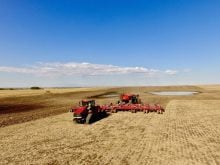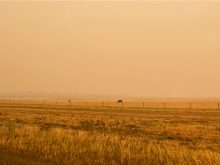This past winter was a season of extreme cold weather across much of Canada. Between the cold weather and the work that is often required outside, regardless of conditions, many producers find themselves working in the cold, sometimes extremely dangerous cold.
Extreme cold warnings are heard and seen on the news and weather alerts seem to have them popping up more often than not. But really what can you do to protect yourself when you absolutely must be outside?
First, assess the risk. Is it absolutely necessary to be out in extreme cold conditions? Check the forecast and see if there is a milder break that fits within the timeline for working outside. Remember things break easier in extreme cold weather. If being outside in the cold is required assess your cold weather gear carefully. Remember your biggest risk is frostbite.
Read Also

Gentle treatments for pain in the neck
Heading toward year-end, people unknowingly tense up against the cold and busyness, causing neck pain that can often be treated with appropriate support and gentle mobility, athletic therapist Kathlyn Hossack says.
Another deadly occurrence in extreme cold weather is hypothermia. Hypothermia takes place when your body loses heat faster than it can generate it, or preserve it. Hypothermia is often thought of when someone falls through the ice or becomes lost in extreme cold weather. Hypothermia prevention should be a part of your farm’s winter safety program.
The most important guidelines to follow for safety are to say warm and dry. Use layers that wick away moisture (avoid cotton as it absorbs and holds water), wear layers that can be shed to prevent sweating. Have dry items to replace any that become wet with snow, sweat or condensation.
Be aware of the extremities that are vulnerable to loss of circulation and frostbite. Mitts are your best option for staying warm, using gloves that allow for dexterity and are not constrictive (overly tight) and can be worn under mitts is a good option as well.
Make sure your boots are in good condition — the lining is in good shape, the boots have no holes or cracks and are ready for conditions. Make sure they fit well. Try on new boots with two pairs of socks to ensure they won’t constrict the feet.
Remember with hands and feet that constricting clothing will decrease bloodflow which in turn will make them feel cold.
Wear your hat and face coverings. Not because you lose most of your heat through your head, but because noses, ears, cheeks and chins are very vulnerable to frostbite. Keep any face coverings dry, rotate with dry items as needed.
Pay attention to what you are feeling. Are you feeling very cold? Are you shivering a lot? Go inside and warm up. Shed any damp or moist layers. If you have wet layers change your clothes to dry.
If you are working in a hot bin or barn, and are then working outside and start to feel warm and sweat start shedding some layers. It will let some of the excess heat and moisture escape.
The stages of cold are: cold, cold pain, cold numb, cold no feeling (cold enough the nerves won’t work and freezing tissue is dangerously close)
Pay attention to shivering. A little is a warning, a lot can indicate early signs of hypothermia. Assume shivering is a sign you need to warm up.
Be sure you have a pre-winter work meeting to discuss proper winter gear and use with your workers. In extreme cold do not send people to do work alone or in isolation. Work in short segments, warm up and then return to work. Be very aware of the risks of frost bite and hypothermia. Be aware of ambient air temperature and how quickly a windchill can drop temperatures into a deadly range.
If frostbite or hypothermia is suspected call 911.
Professor Popsicle’s three tips for cold-weather
Dr. Gordon Giesbrecht is a professor at the University of Manitoba’s Faculty of Kinesiology and Recreation Management. He is also known as Professor Popsicle, due to his work on survival in cold weather. Giesbrecht lists three main tips for working outside.
1. Don’t sweat
- Take layers off when you’re working and making heat;
- Replace wet layers with dry layers;
- Cool is a good temperature when working, hot or cold are not; and,
- Keep water out of your stuff.
2. Wear breathable clothing
- Don’t wear cotton (it absorbs and holds moisture);
- Wear breathable fabrics (wool, wool blends, sports layers that wick moisture);
- Have a breathable outer layer (not completely waterproof);
- If you need a waterproof layer make sure it’s light and easily removable.
3. Never accept numbness
- Warm up;
- Change layers; and, • Increase bloodflow.














